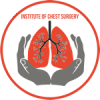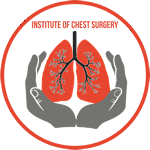Chest trauma is a severe and potentially life-threatening injury that requires prompt and appropriate medical attention. Whether resulting from a car accident, a fall, or a sports-related incident, chest trauma can cause damage to vital organs and compromise the respiratory system. In this article, we will explore the various treatment options available for chest trauma, aiming to provide valuable insights into the medical interventions that can save lives and promote a successful recovery. From immediate emergency care to surgical procedures and rehabilitation, understanding these treatment options is crucial for both medical professionals and the general public.
1. Initial Emergency Care
When someone experiences chest trauma, the first step is to seek immediate medical assistance. Emergency responders and healthcare professionals are trained to assess and stabilize the patient’s condition. The primary focus is on ensuring proper breathing and circulation. Treatments in this critical phase may include:
- Oxygen Therapy: Administering supplemental oxygen to improve blood oxygen levels and support breathing.
- Intravenous Fluids: Providing fluids through an IV line to maintain blood pressure and prevent shock.
- Pain Management: Controlling pain using appropriate medications to keep the patient as comfortable as possible.
- Imaging Studies: Conducting X-rays, CT scans, or ultrasound to assess the extent of the injury and identify any internal damage.
2. Stabilization and Observation
After the initial assessment, patients with chest trauma might require further stabilization and observation. In some cases, the injury may not require immediate surgical intervention but will necessitate close monitoring and non-surgical treatments:
- Chest Tube Insertion: If there is a pneumothorax (collapsed lung) or hemothorax (blood in the chest cavity), a chest tube may be inserted to drain the air or fluid and re-expand the lung.
- Pain Management: Continued pain management is essential during the observation period to ensure the patient’s comfort.
- Antibiotics: If there is a risk of infection, antibiotics may be prescribed as a preventive measure.
3. Surgical Interventions
In more severe cases of chest trauma, surgical interventions may be necessary to repair damaged organs or address life-threatening conditions. Common surgical treatments include:
- Thoracotomy: An emergency procedure where a surgical incision is made into the chest to gain access to the heart, lungs, or major blood vessels for repair.
- Rib Fixation: For severe rib fractures, surgery may be performed to stabilize and realign the fractured ribs, promoting quicker healing and reducing the risk of further complications.
- Cardiac Surgery: In cases of traumatic heart injury, open-heart surgery may be required to repair damaged structures or control bleeding.
- Lung Resection: If the lung sustains severe damage, a lung resection may be performed to remove the affected portion and prevent further complications.
4. Post-Surgical Care and Rehabilitation
After undergoing surgery, patients require specialized post-surgical care and rehabilitation to ensure a successful recovery and minimize long-term complications:
- Intensive Care Unit (ICU) Care: Patients recovering from extensive chest trauma surgery are often closely monitored in the ICU to manage pain, monitor vital signs, and prevent complications.
- Physical Therapy: Chest trauma can lead to reduced lung capacity and limited mobility. Physical therapy helps patients regain strength, flexibility, and lung function.
- Breathing Exercises: Deep breathing exercises are essential to prevent lung infections and enhance respiratory function.
- Psychological Support: Recovering from chest trauma can be emotionally challenging. Providing psychological support and counseling can aid patients in coping with the experience.
Conclusion
Chest trauma demands immediate medical attention and personalized treatment approaches. From emergency care to surgical interventions and rehabilitation, the management of chest trauma is a collaborative effort involving healthcare professionals, surgeons, therapists, and support staff. Prompt diagnosis, appropriate treatment, and continuous monitoring are crucial to improving patient outcomes and enhancing the chances of a successful recovery. By understanding the treatment options available for chest trauma, we can ensure that patients receive the best possible care during their journey to recovery.







